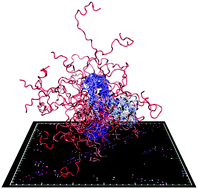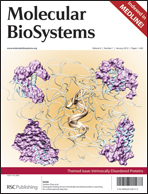Intrinsically disordered proteins that acquire their three dimensional structures only upon binding to their targets are very important in cellular signal regulation. While experimental studies have been made on the structures of both bound (structured) and unbound (disordered) states, less is known about the actual folding–binding transition. Coarse grained simulations using native-centric (i.e.Gō) potentials have been particularly useful in addressing this problem, given the large search space for IDP binding, but have well-known deficiencies in reproducing the unfolded state structure and dynamics. Here, we investigate the interaction of HIF1α with CBP using a hierarchy of coarse-grained models, in each case matching the binding affinity at 300 K to the experimental value. Starting from a pure Gō-like model based on the native structure of the complex we go on to consider a more realistic model of helix propensity in the HIF1α, and finally the effect of non-native interactions between binding partners. We find structural disorder (i.e. “fuzziness”) in the bound state of HIF1α in all models which is supported by the results of atomistic simulations. Correcting the over-stabilized helices in the unbound state gives rise to a more cooperative folding–binding transition (destabilizing partially bound intermediates). Adding non-native contacts lowers the free energy barrier for binding to an almost barrierless scenario, leading to higher binding/unbinding rates relative to the other models, in better agreement with the near diffusion-limited binding rates measured experimentally. Transition state structures for the three models are highly disordered, supporting a fly-casting mechanism for binding.

You have access to this article
 Please wait while we load your content...
Something went wrong. Try again?
Please wait while we load your content...
Something went wrong. Try again?


 Please wait while we load your content...
Please wait while we load your content...